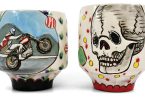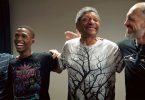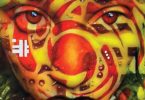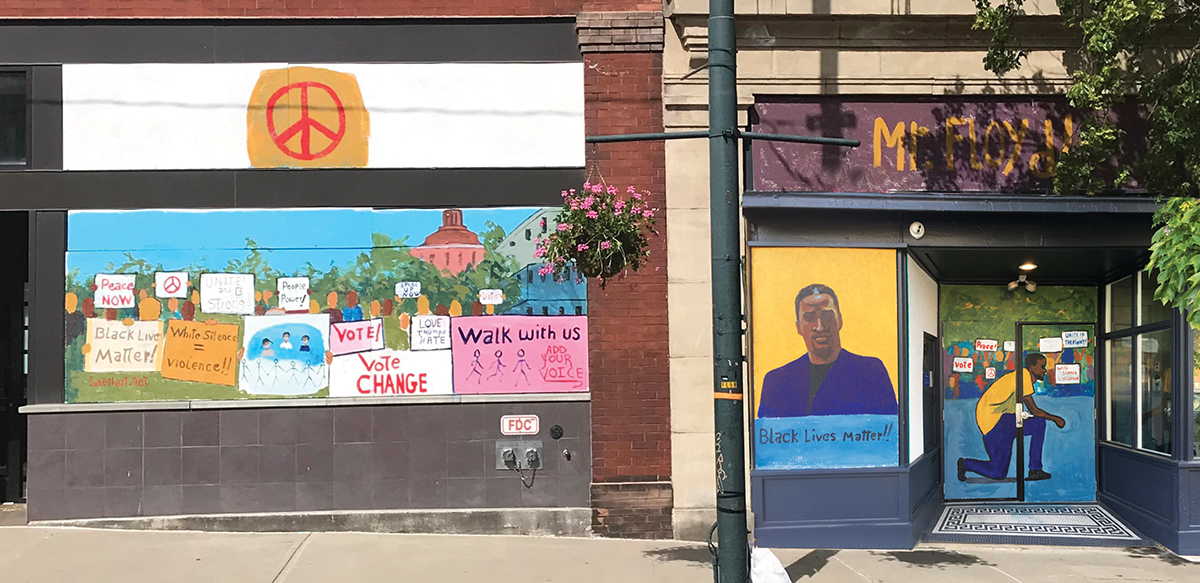
Mural on Blue Ridge Public Radio Building painted by artist Joseph Pearson
By Emma Castleberry
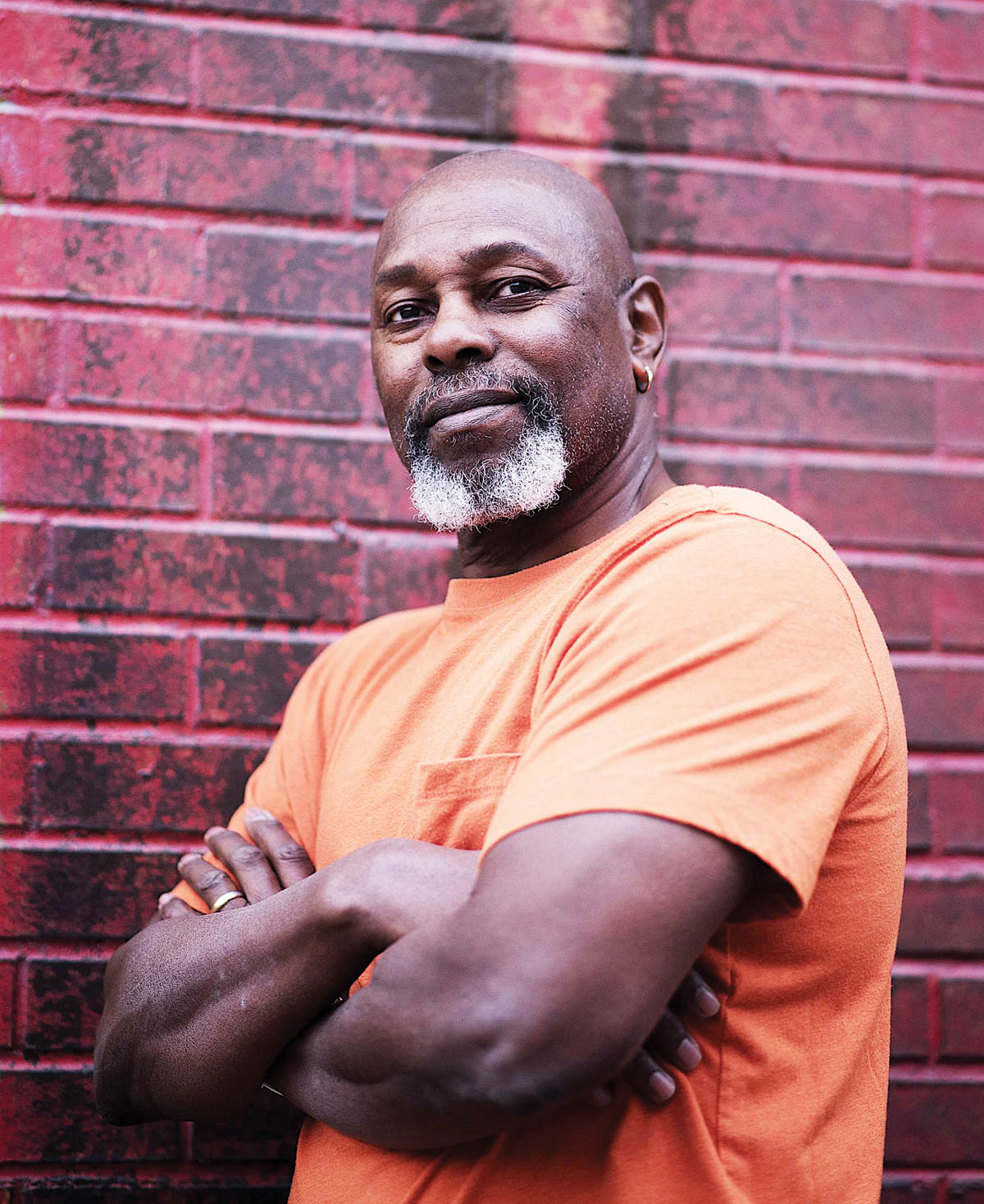
Artist Joseph Pearson
Always known for its rich arts culture, the city of Asheville saw a rapid and unique artistic response during the June protests following George Floyd’s death at the hands of police. When storefronts boarded up their windows, artists took to the empty plywood to express their grief, anger and demands. David Feingold, CEO of Blue Ridge Public Radio (BPR), took notice. “I drove through downtown and saw how a range of very talented local artists were reacting to George Floyd’s killing and the protests that followed,” says Feingold. “While our journalists were covering protests for broadcast, I wanted to find another medium to document the community’s emotions and actions through the lens of a local African American artist whose work would capture the moment. I felt that our own boarded-up windows would provide a large canvas to reflect a critical time in the life of our city.”
Feingold knew just the man for the job: Joseph Pearson. Feingold was familiar with Pearson’s work and also recalled a newspaper interview with the artist. “He said his work was about communication and conversation, not small talk,” Feingold says. “That stuck with me.” Pearson has recently been named a lead artist on the Black Lives Matter Mural Project, a public art installation in Asheville’s central business district.
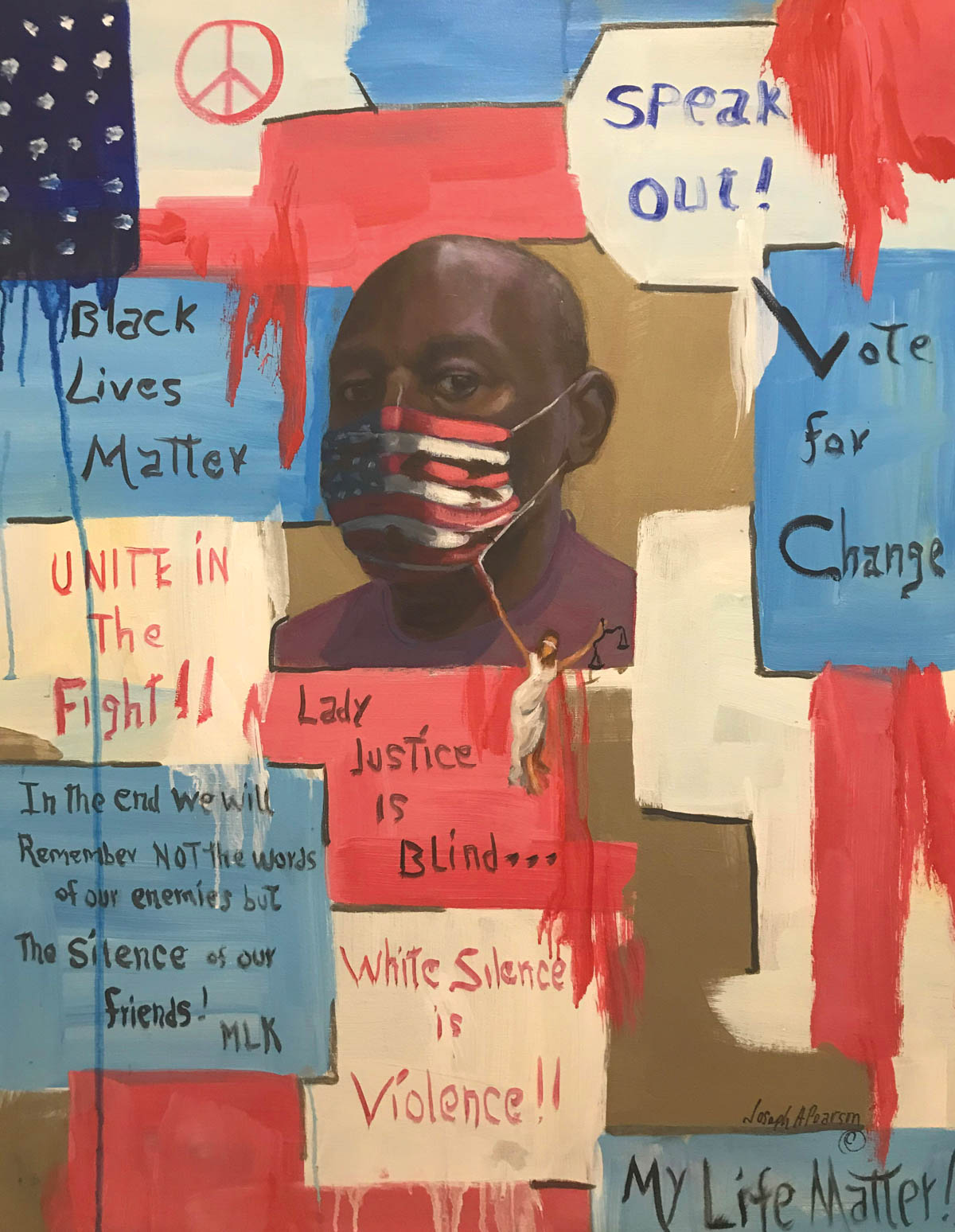
My Life Matters. Joseph Pearson, artist
Together, Pearson and Feingold discussed the content of the large mural that would stretch across the exterior of BPR’s offices and studios. They agreed on an image of George Floyd with a “positive slant,” says Pearson. “Seeing Mr. Floyd in a more dignified manner was a mission we both had. I chose this particular image of Mr. Floyd because I wanted to emphasize his humanity. The protestors represent, among other things, a respect for his humanity and a need for profound change in our system of policing.”
In an original sketch of the mural, Pearson included the scene of a police officer with his knee on Floyd’s neck. “My thinking was to contrast the two—this brutal murder against this man, a human being—but we decided to leave the policeman out because there is enough of the negative imagery and we didn’t want to add to that.” Pearson adds that, as an African American man who has suffered discrimination, this mural was a deeply personal project. “This mural allowed me an opportunity to publicly share the collective grievances of people of color,” he says.
BPR’s window board murals were taken down in July and are currently in safe storage. The ultimate goal is to find a permanent home for all of the downtown murals, where they will be available to the community for viewing, reflection and education.“We turned over our building as a canvas to an important Black artist in our community who documented a tragic, pivotal time in our city’s and our nation’s history—a reckoning with systemic racism,” says Feingold. “Joseph’s mural holds up a mirror to us as we seek solutions and work toward healing.”
To see more of Joseph Pearson’s work, visit JosephArt.net.

